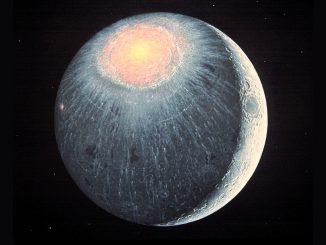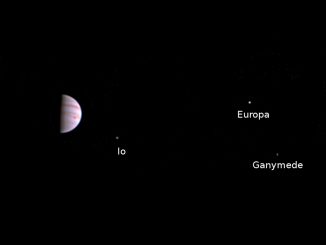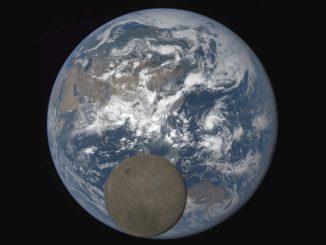
moon




Let the Moon be your guide to finding Neptune on 23 July
Outermost planet Neptune reaches opposition on 2 September 2016, this year marking the 170th anniversary of the gas giant’s discovery. But you don’t have to wait six week to observe the farthest known planet of the solar system, because the waning gibbous Moon drops close by in the small hours of Saturday, 23 July as seen from the British Isles.



NOAA satellite shows Moon crossing face of Earth for second time in a year
On 5 July 2016, the Moon passed between the National Oceanic and Atmospheric Administration’s DSCOVR satellite and Earth. NASA’s EPIC camera aboard DSCOVR snapped these images over a period of about four hours. In this set, the far side of the Moon, which is never seen from Earth, passes by. The last time EPIC captured this event was 16-17 July 2015.

See the Moon meet Mars and Saturn
In the bright evening twilight of 14, 15 and 16 July, observers in the British Isles and Western Europe can see the waxing gibbous Moon pass by Mars, first-magnitude star Antares in Scorpius, then Saturn. This series of conjunctions occurs very low in the southern sky for UK-based astronomers, while Australasian observers are ideally placed to view the spectacle almost overhead.


See the crescent Moon get close to Jupiter on Saturday, 9 July
If the excitement of the Juno spacecraft’s arrival at Jupiter has prompted you to seek out the solar system’s largest planet, then the 5-day-old cresent Moon acts as a convenient celestial guide during the evening of Saturday, 9 July when it makes a close pass of the gas giant. Here’s our guide to where and when to see this beautiful celestial pairing.
